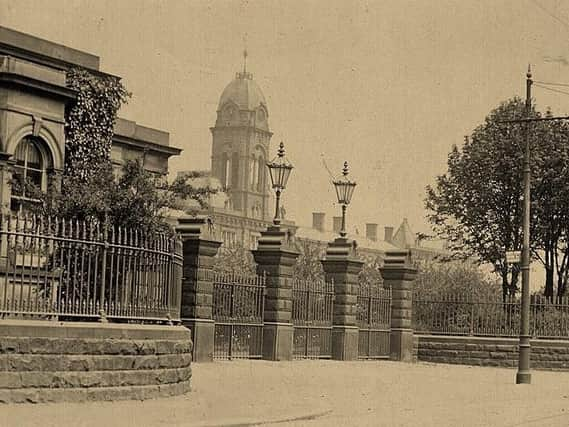Preston woman poisons herself after engagement ends


In the year 1917 Marion Traynor, aged 24, an army pay clerk, was lodging in the home of Margaret Turner in Harland Street, Fulwood.
On the first Wednesday of March, Miss Traynor left her lodgings early, telling her landlady she would be back shortly.
Advertisement
Hide AdAdvertisement
Hide AdBy 8 o’clock that morning she was at the workshop of Joseph Noblett, a jeweller, whose premises were in Bamber’s Yard. He and Miss Traynor had kept company for about eight months, but had broken off their engagement in February.
This was partly due to the fact that she was a Roman Catholic, and he belonged to the Church of England. After the break-up she had visited the workshop a number of times and talked about reconciliation. On this occasion she asked to talk with him, but he said he was busy and asked her to leave. She refused to go and so he went on with his work with his ex-fiancée sat in the shop.
A couple of hours later when he came into the shop area she stood up and threw some pepper in his face, which prevented him from seeing for a little while. When he recovered his composure he noticed she had an empty bottle in her hand that had contained hydrochloric acid that she had taken from a shelf in the store.
There was also an empty glass on the counter and she told him she had taken the poison. Within minutes she was doubled up in agony and Noblett quickly fetched her a glass of salt and water, and she began to vomit.
Advertisement
Hide AdAdvertisement
Hide AdAlarmed at her condition Noblett rushed on to Friargate where he got the attention of P.C. Goodair who went back to the shop with him. The girl was still vomiting and was removed firstly to the police station on Lancaster Road, where olive oil was administered, and then moved to the Preston Royal Infirmary. She had admitted taking the poison to P.C. Goodair, but told him she did not mean to do it.
Despite the best of medical attention she was in considerable pain and by early July she was moved to the Fulwood Workhouse Infirmary under the care of charge nurse Margaret Alice Wilson. Although by then she was able to take food well she was unable to retain it. Consequently, her health deteriorated further and in mid-August 1917 she died.
An inquest was held at the Fulwood Workhouse on the third Friday of August before the coroner John Parker. Dr. Pimley, medical officer of the Fulwood Workhouse, explained that the effects of the poison was that the girl became a skeleton. Cause of death being corrosion of the stomach due to the action of the acid.
Amongst those called was her ex-fiancée Joseph Noblett who told the gathering she had struggled to come to terms with the ending of their relationship and stated that he was distraught over her drastic action. He explained that he had bottles of acid on the premises that he used for his business, but said he was not aware that she knew of their where-abouts.
Advertisement
Hide AdAdvertisement
Hide AdHer landlady, Margaret Turner, described her as a young woman of an excitable disposition, but remarked that she had never heard her threaten to do anything to herself. She believed that she had no mother and had come from Liverpool to work.
The coroner concluded by saying there seemed no doubt that it was the girl’s own act, being deeply disturbed by her engagement ending. In his opinion no blame could be attached to Noblett, who had acted in a proper manner. Evidence submitted suggested to him that she had gone to the shop in a very frenzied state, prepared to do something desperate.
The jury after a lengthy consultation returned a verdict of ‘Suicide whilst temporarily insane’.
